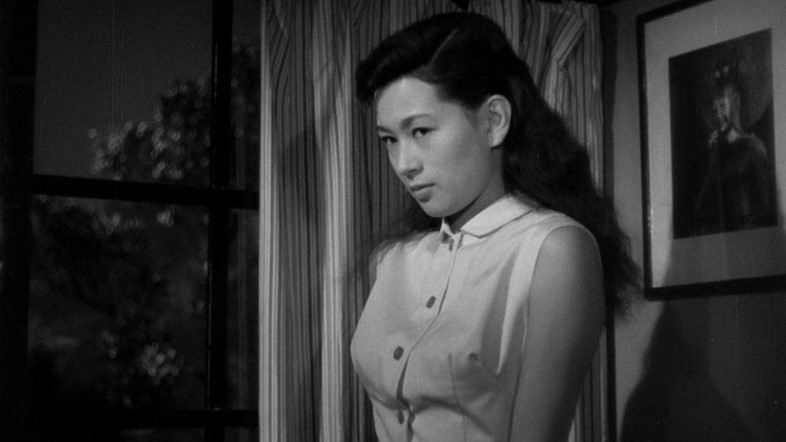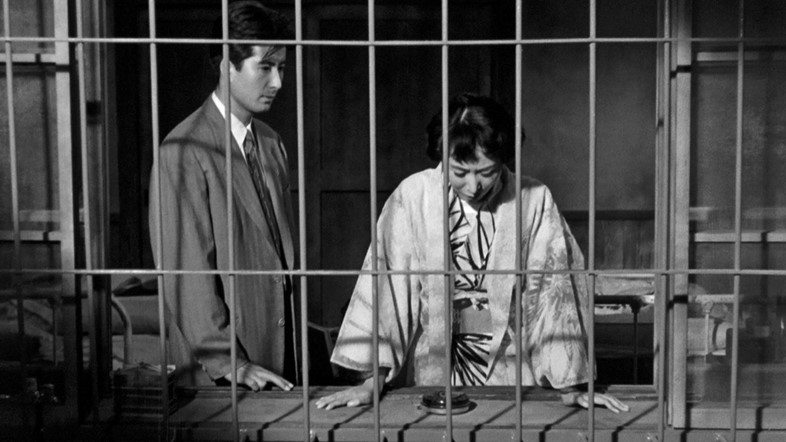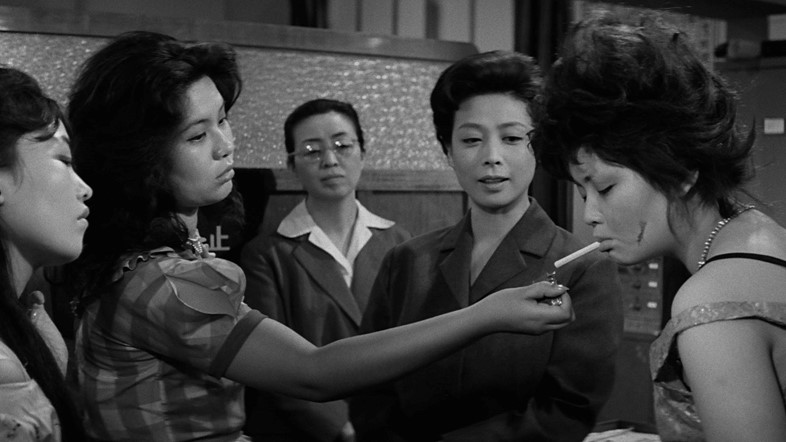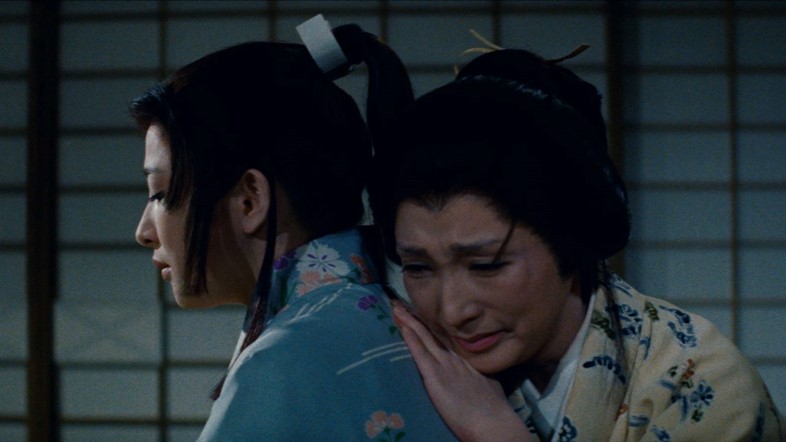As the BFI dedicates its latest film season to Kinuyo Tanaka, we highlight five vital tales of female agency and desire by one of the country’s first-ever female auteurs
In the 1950s, Japanese cinema enjoyed what is widely discussed as its second “golden age” – a period in which the country’s filmic output was considered among the best in the world. This was a time when directors like Akira Kurosawa (Rashomon), Kenji Mizoguchi (Ugetsu) and Masaki Kobayashi (Harakiri) were winning top awards in Europe. Japanese genre classics were transforming the shape of Hollywood – as Seven Samurai, Yojimbo and The Hidden Fortress were soon-to-be adapted to create The Magnificent Seven, A Fistful of Dollars and Star Wars in the West. And as Godzilla was born out of the atomic destruction of Hiroshima and Nagasaki, Yasujirō Ozu (Tokyo Story) was creating gentle cinematic works that are today admired as some of the greatest of all time.
But while the stars of the screen were both male and female, the influential figures behind the cameras were predominantly men; the effect of a deeply patriarchal society historically bound by tradition. Most discussions of this deeply influential period of global cinema, in fact, will have little to say about female filmmaking at all – there were so few figures consistently working in the field. It was not until a young Naomi Kawase (Suzaku) won the Caméra d’Or at Cannes in 1997 that women filmmakers of Japan truly found sustained recognition overseas.
Much-welcomed, then, is the BFI’s latest film season, in collaboration with Edinburgh Film Festival (EIFF) and Janus Films. Titled Kinuyo Tanaka: A Life in Film, it explores the outstanding works of one of the country’s first-ever female auteurs – whose incredible and under-seen films have been newly restored in 4K. A screen icon in her own right (highlights from her incredible acting career, including collaborations with nearly all of the aforementioned filmmaking giants, are to be shown in September), Tanaka defied the male gatekeepers of the industry to carve out her own career behind the camera. She thrived in the process, delivering works that matched those of her male counterparts and often surpassed them.
Though her directing career was short (Tanaka completed six films in nine years in total), the stories she told were vital tales of female agency and desire that were essential to the cinematic development of one of the world’s great filmmaking nations. Below are five highlights, which screen at the BFI Southbank in London and at the EIFF in Edinburgh across August and September.

The Moon Has Risen, 1955
Two years after making her directorial debut with Love Letter (1953) – a post-war melodrama about a veteran who writes letters for women – Tanaka returned to the director’s chair to adapt a script originally written by the great Yasujirō Ozu (Tokyo Story), in conjunction with screenwriter Ryosuke Saito.
Tanaka’s The Moon Has Risen would also star Ozu regular Chishû Ryû (Tokyo Story, Late Spring) – as the father of three young women living in the bucolic countryside in Nara. His eldest daughter has returned home after her husband’s death; the middle child is quiet and content; and the youngest, Setsuko (Mie Kitahara) dreams of leaving the pastoral surroundings for the big city. A series of gentle storylines unfold – with blooming romances, coming-of-age struggles and the tension between technological advancement and traditional life all explored via an ensemble of charming characters.
Beyond the recognisably Ozu-esque themes, it is the vivid setting and sumptuous visuals that give The Moon Has Risen such a warm character. The film opens with a shot of a great pagoda rising out of the fog, as Nara’s tame deer, traditional temple architecture, conifer trees and rolling hills all add to the rich and tranquil atmosphere thereafter. It’s a backdrop so harmonious that it even leads one character to quip: “Nara is too peaceful” – especially compared to the “chaotic and dusty” Tokyo.

Forever a Woman (aka The Eternal Breasts), 1955
Forever a Woman – based on the tragic life of female poet Fumiko Nakajō and written by female screenwriter Sumie Tanaka – was considered taboo in the mid-1950s for its explorations of female sexuality. From today’s vantage point, it is an essential stepping stone in the history of Japanese women’s cinema.
Tanaka’s third feature opens with a series of shots that capture an idyllic countryside vista, full of rounded hills and flowing water. These symbolic images foreshadow a powerful tale of feminine agency to come – and while the opening montage of horse-drawn carts and quaint family life is so sweet that it could be plucked from a Disney film, Forever a Woman soon takes a turn for the tragic.
Demure wife Fumiko (Yumeji Tsukioka) discovers her “failed broker” husband’s infidelity thereafter. She divorces him – and loses custody of one of her children in the process. Her respite lies in her poetry, which is picked up for publication by a Tokyo newspaper – but just as her career is about to break big, she is diagnosed with terminal breast cancer.
Masterfully constructed and genuinely moving in its tenderness, Tanaka also impresses by unexpectedly adopting tropes from the horror genre in scenes such as the depiction of a hospital operating room. The result is a drama of remarkable depth and poise – that carries a heavy weight throughout.

The Wandering Princess, 1960
In the five years following the release of Forever a Woman, Tanaka continued her esteemed acting career, appearing in films like Mikio Naruse’s 1956 drama Flowing (a personal favourite of Oscar-winning Drive My Car director Ryusuke Hamaguchi) and Yasujiro Ozu’s first colour movie, Equinox Flower (1958).
When she returned to directing, Tanaka brought with her esteemed screenwriter Natto Wada, who had only recently penned the script for Kon Ichikawa’s Oscar-nominated war drama The Burmese Harp (1956). This would prove a fruitful partnership: set against the backdrop of the collapse of the Empire of Manchuria in 1945 (a republic seized by the Japanese in China), the film follows the doomed romance between Japanese aristocrat Ryuko (Machiko Kyō, Rashomon) and the Manchurian Emperor’s brother (Eiji Funakoshi).
As the couple are separated during the collapse of the state, Ryuko is forced to endure formidable hardship – and the film excels in its set-up and execution of this struggle. Whereas early scenes pop from the visual splendour of royal weddings, cherry blossom trees, lanterns and intricate costumes, the latter half of the film is spent braving the vast wilderness and great, snow-capped mountains as Ryuko attempts to return to Japan. Shots of crimson skies, rolling valleys and the sun’s rays piercing the clouds at daybreak are among those that exemplify The Wandering Princess’s impressive, epic scale.

Girls of the Night, 1961
In 1958, Japan’s Anti-Prostitution Law came into effect – criminalising the act of committing sexual intercourse in exchange for compensation, and requiring female sex workers to be detained in correctional facilities for rehabilitation. Girls of the Night, Tanaka’s fifth directorial effort, tackles this societal absurdity face-on – following former sex workers in their attempts to restore agency in spite of the obstacles in their way.
The film opens in an alarmist fashion, as newspaper headlines declare ‘270 Prostitute Arrested This Month’. Thereafter, a group of snooty “ladies club” members is given a guided tour of a women’s reformatory, as if it were a zoo. There, they find a strict headmistress, a menopausal ex-prostitute, and a young woman who has a knack for escaping amidst a lively ensemble of characters. The film’s visual signature – built around meticulous shots full of detailed scenery and bustling female bodies – is also established here, as overcrowded living quarters and busy textile workshops soon give way to messy laundry rooms, bric-a-brac grocery stores and thriving greenhouses in the outside world.
At the heart of it all is Kuniko (played by Chisako Hara, later of Japanese New Wave classic Pale Flower, and cult Y2K J-Horror Dark Water), whose journey towards redemption combines elbow grease, seduction and, later, heartfelt romance. Her story is a bittersweet highlight within this richly layered film concerning the plight of women in unforgiving circumstances.

Love Under the Crucifix, 1962
Artillery, flames and destruction mark the opening of Love Under The Crucifix, as the dying screams of men offer a deafening soundtrack. The year is 1587, and feuding warlords are struggling toward the reunification of Japan; there will be many casualties.
In the midst of it all, the daughter of a tea master falls in love with a married prince who shares her Christian faith. Heartbroken by his rejection, her misery is compounded when she learns that her religion is to become criminalised – their churches will be confiscated, temples demolished, and priests will be banned. If they don’t convert, “they’ll probably be hanged or crucified.”
Two stars of Japan’s second “golden era” of cinema bring this epic and tragic period romance to life, with Ozu leading lady Ineko Arima (Equinox Flower) delivering an emotionally rich performance opposite the immense gravitas of Tatsuya Nakadai (Ran, The Human Condition). Equally impressive is the director’s radiant use of colour and intricate costume and set design – from the hues of deep blue skies and rich orange flames to those of glimmering, watery horizons, this bewitching restoration offers a resplendent visual treat to an already stunning film.
